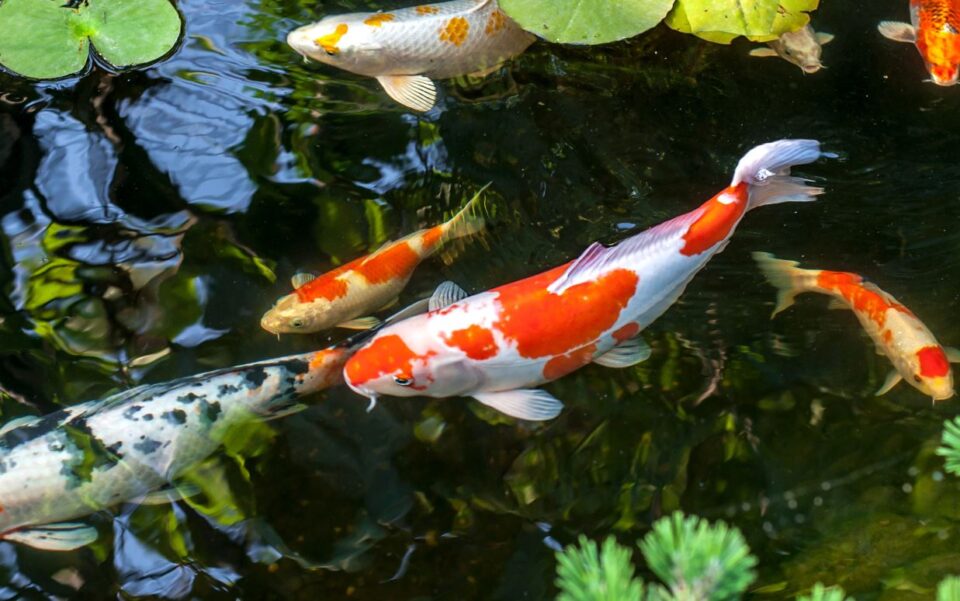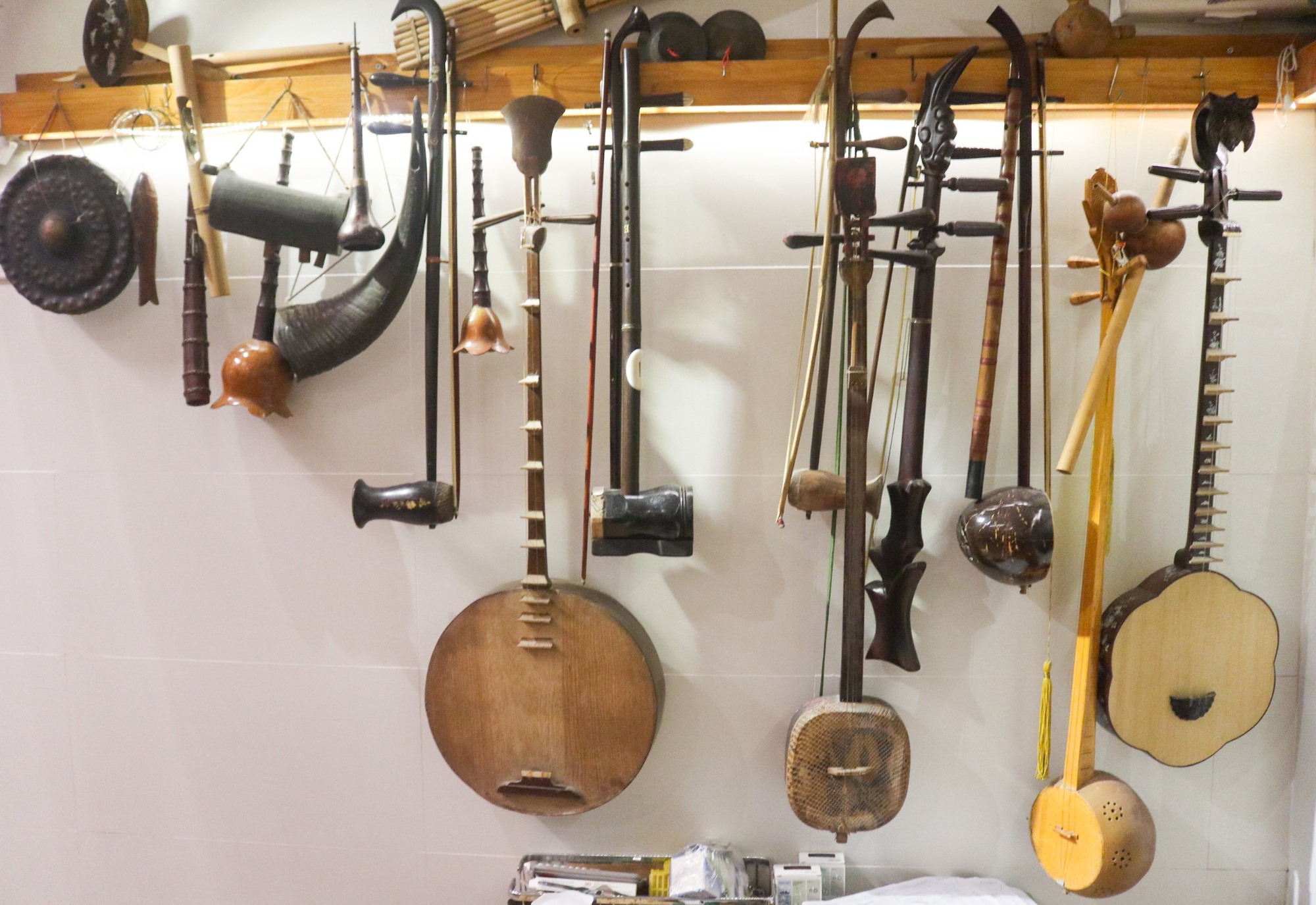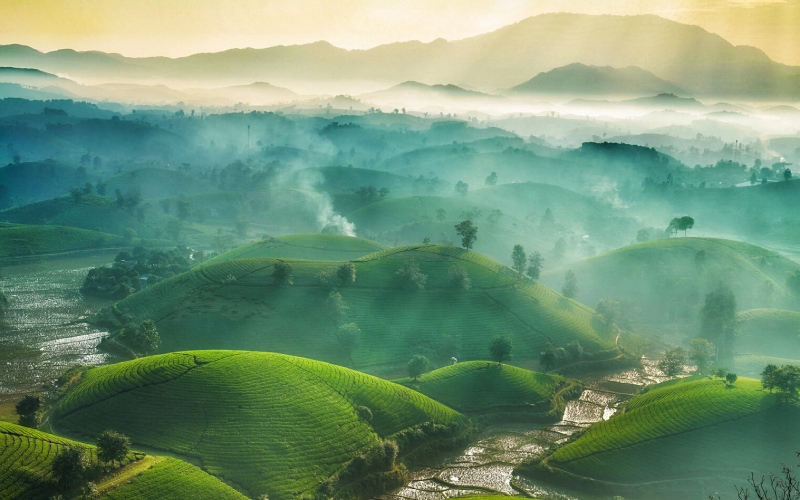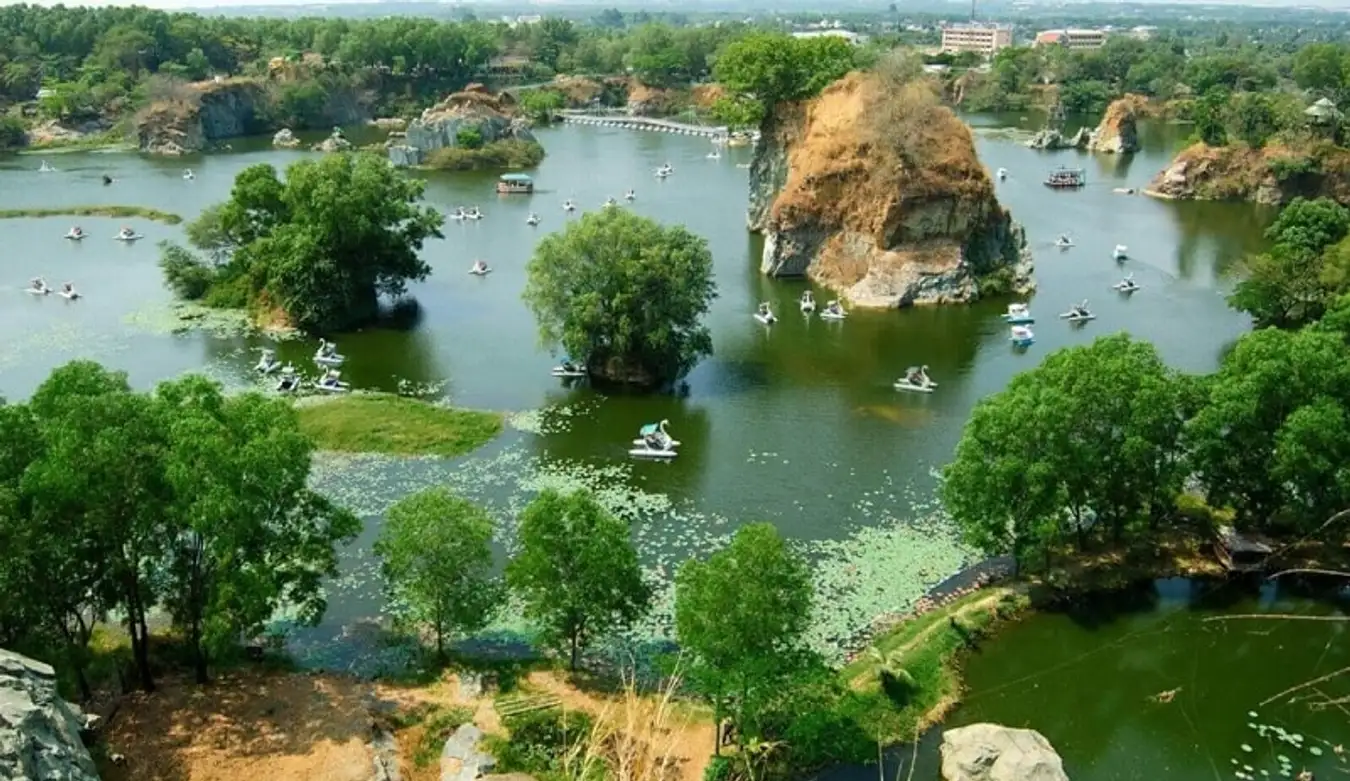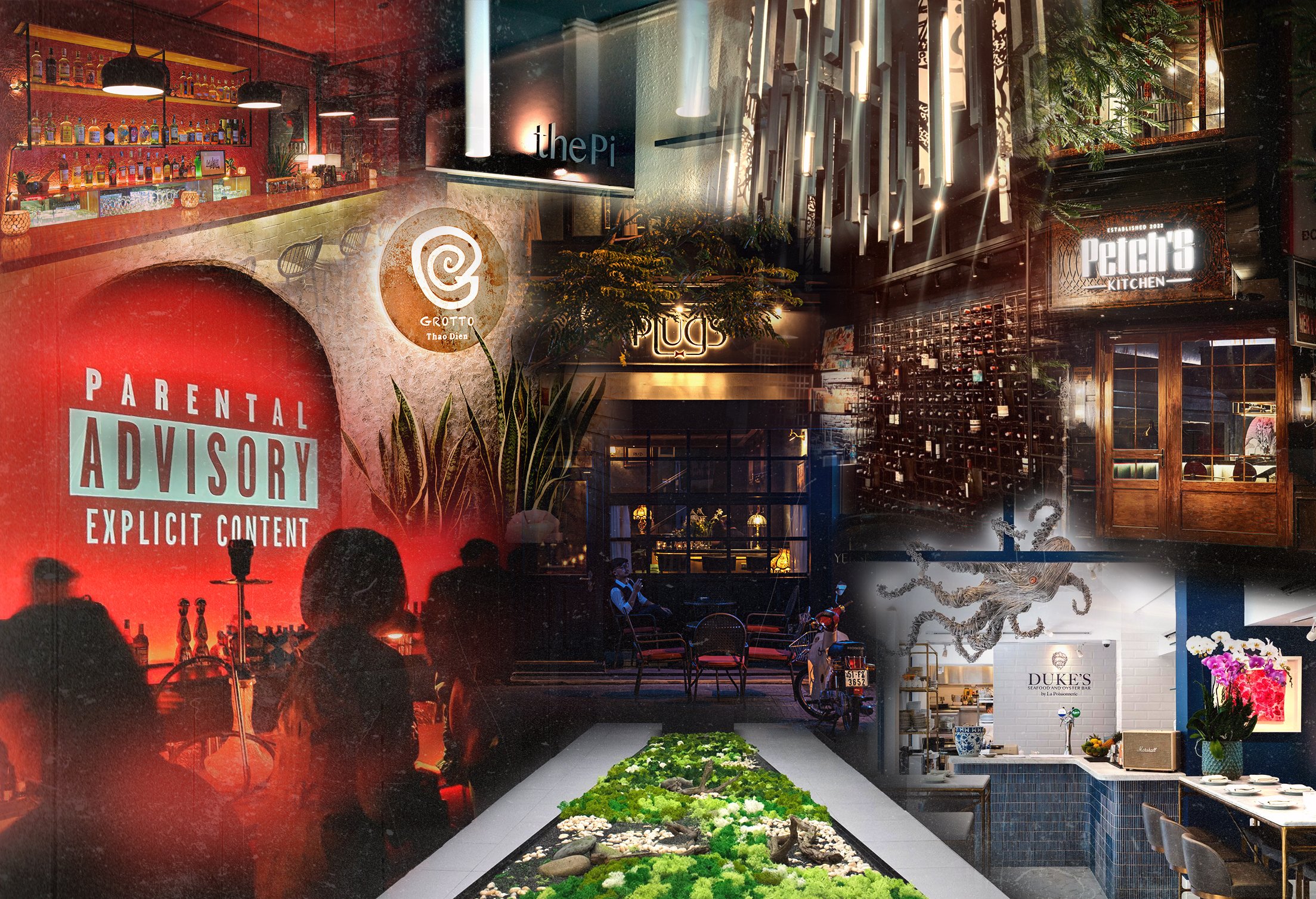Top 10 most beautiful lagoons in Vietnam
Vietnam is a country with diverse terrain with many poetic and majestic landscapes. Besides terrain types such as coastal terrain and limestone terrain, lagoon terrain is also one of the quite typical terrain types. The following article Travel Vivu will introduce the most beautiful lagoons in Vietnam, which will surely make you fascinated.
Van Long lagoon
Van Long Lagoon in Ninh Binh province, just over 80km from Hanoi capital, is the largest wetland nature reserve in the Northern Delta, with a rich and unique ecosystem. Furthermore, this is also the residence of many flora and fauna, very suitable for admiring and exploring, immersing yourself in poetic nature. Van Long Lagoon still has a wild beauty because it has not had much human impact and has not been exploited much for tourism. Therefore, the ecosystem of flora and fauna is extremely diverse and rich, including the population of white-rumped langurs listed in the world’s red book, which is still preserved quite a lot here.
Sitting on the boat, you will see Van Long flooded lagoon like a wild oil painting that attracts the eye. Because in this place, in addition to the majestic rolling mountains, you can also float on a boat between four green mountains and blue water, under the clear water moss and algae appear as beautiful as colorful coral reefs. . The water here is also a clear color, you can also see the creatures below, looking down at the lake surface reflecting the clouds and sky, the majestic mountains, it is truly a poetic and lyrical scene. Around there are patches of grass and grass swaying in the wind. Looming in the distance are flocks of white storks, teal, storks, fire storks… leisurely foraging for food or flying in the air.
Traveling to Van Long lagoon is also attractive in that in addition to being able to admire a charming landscape painting, visitors can also see beautiful shimmering caves with hanging stalactites of various shapes. Limestone mountains and eroded caves with attractive shapes are also shelters for many extremely interesting and unique animals. Some beautiful caves that you can visit include: Fish Cave, Bong Cave, Turtle Cave, Chanh Cave.
Lap An lagoon
Lap An Lagoon, also known as An Cu Lagoon, is located in a beautiful location, right at the foot of Phu Gia Pass, surrounded by the majestic Bach Ma mountain range, in front is the gentle Lang Co Bay with emerald green water. . All give Lap An lagoon a dreamy beauty that makes many tourists stare in amazement. Lap An Lagoon is perhaps most beautiful in the late afternoon, when the last rays of the day shine down on this place, creating a romantic and peaceful beauty. Coming here at sunset, you will not be surprised by the scene before your eyes, both majestic and mixed with a special “very Hue” quality.
In addition, this place not only possesses poetic natural scenery, the lagoon is also home to many species of aquatic plants and animals, and among them, the most numerous are oysters, a specialty of the surrounding people. Lap An area. The work of local people is mainly fishing, especially oysters. Oysters in Lap An lagoon are famous for being delicious and fatty, so when coming here, visitors will enjoy delicious dishes from this type of seafood such as grilled meat, porridge, stir-fried onions, salad… The flavors of the dishes will make you happy. Tourists cannot forget.
O Loan Lagoon
Located on National Highway 1A, about 22km north of Tuy Hoa city, O Loan lagoon has an area of 1570 km2, famous as a brackish water lagoon located close to the seaport with simple, rustic and peaceful beauty. Located close to the foot of Quan Cau pass, looking down from the pass, the lagoon is shaped like a phoenix spreading its wings to cover the whole area.
This place also has mysterious stories associated with the legend “Cao Bien Day Non” and a natural sand dune considered by folk as “Cao Bien’s grave”. However, the most famous legend is still the story of a fairy named Loan. Legend has it that once upon a time, there was a fairy with stunning beauty. Because of her playful and mischievous nature, she rode O Thuoc and flew down to earth to travel all over the world. Coming to Tuy An land, the bird got tired of its wings so it landed here, causing people and birds to turn into a lagoon. From then on, people took her name and combined it with the name O Thuoc, called O Loan for short, to name this lagoon.
With its inherent peacefulness and images of fishermen’s fishing boats, this lagoon deserves to be on the list of photo hunting spots for the beauty of Phu Yen by many professional photographers. Don’t worry if you’re not a real photographer, just grasp a few photography tips with the right amount of time and you’ll get yourself a set of super quality and unmatched photos. Remember, the best time to catch the most beautiful moments here is at sunrise and sunset when the sunlight dyes the entire lagoon area red. That is also the time when fishermen start a new day with their daily livelihood and return home with a batch full of sea products.
O Loan Lagoon has a simple and peaceful beauty with airy and fresh space. Because it is a brackish water lagoon, the lagoon has a lot of seafood such as oysters, crabs, blood cockles… Casuarina forests lie along the water banks of the forest like young girls dancing their own dances. And this is also a shelter for birds such as ducks, storks, teal, etc. In particular, the scenery here seems to become more poetic as the afternoon progresses. It can be said that the sunset on O Loan lagoon creates a perfectly beautiful natural picture. Indeed, the gentle feeling of watching the sunset when returning here is extremely wonderful.
Nha Phu lagoon
According to ancient people, the previous lagoon was called Nha Phu lagoon – meaning the lagoon is rich in fish and shrimp, showing the wealth of this place. This is the name of the ancient Cham people, who were the first people to set foot on this land. However, later when Kinh people came to live here, it gradually changed the name to Nha Phu lagoon or Nha Phu Bay that many people know today.
Nha Phu Lagoon is a large area and famous for tourist islands such as Thi island, Sam island, Lao island, Da Bac island, Lao island – Monkey island, Ninh Van resort, Hoa Lan stream. Nha Phu Lagoon is nearly 1,500 hectares wide, is the junction between Nha Trang Bay and Van Phong Bay, about 15 km from Nha Trang city, in Khanh Hoa province. Coming here, you will have the opportunity to explore and learn about three islands such as Hon Thi, Hon Heo and Hon Lao. Nha Phu Lagoon is the convergence of many terrains such as streams, islands, seas, mountains, and even bays.
With its pristine landscape, sparse population, and white sand beaches stretching for kilometers, this place has truly become an ideal stopping place for many tourists both domestic and foreign. In addition, Nha Phu Lagoon is also a place to develop aquaculture and has fed many people here. In general, everything here is like a poetic, peaceful oasis in the middle of the vast, blue ocean.
Tam Giang Lagoon
Tam Giang Lagoon has a length of 24 km, and an area of 52 km2, in the direction of west northwest – east southeast, from O Lau river mouth to Huong river, to Thuan An estuary. Considered to be the largest brackish water lagoon in Southeast Asia, Tam Giang Lagoon is actually a confluence of rivers, including the Huong River, Bo River and O Lau River converging before flowing into the sea mouth. Therefore, this place is a great stopping place for many flocks of storks, egrets, wild geese, mallards…
Coming to Tam Giang lagoon, you should not miss the opportunity to visit Thai Duong Ha fishing village. It is a small oasis on the lagoon. Surrounding the village is water covered on all four sides. The ancient fishing village of hundreds of years still exists and develops to this day. Coming here, visitors will have interesting things to discover about culture. Carrying within itself the harmonious beauty of traditional Vietnamese communal houses and hidden deep within the unique culture of temples and shrines in Thua Thien province.
The next destination when coming here is Ru Cha mangrove forest, a “specialty” surrounding Tam Giang lagoon. The mangrove trees cover like a wall of trees. Sailing into this area seems to separate you from the outside world. Not only does it attract tourists by its trees, but this place also has abundant sources of shrimp and fish. Besides, Ru Cha mangrove forest is also a habitat for many bird species. When the sunset falls, flocks of birds flying back to their nests is the most unforgettable sight when traveling to Ru Cha.
Coming here, you will be fascinated by the most irresistible beauty of Tam Giang lagoon at sunset. From about 4:00 p.m. to 5:30 p.m., rose-gold light tints the entire lagoon, creating a beautiful and charming landscape picture. At this time, the weather gradually turns purple, the boats arrive at the dock after a hard day of work on the river. The lagoon at nightfall is so gentle, poetic, and lyrical. And of course, it is indispensable to check in colorful sparkling photos to save as souvenirs. Occasionally, you hear the sound of Hue echoing somewhere, making the listener’s heart flutter.
Dam Thi Nai
Thi Nai Lagoon has a natural area of about 5,000 hectares, a length of more than 15 km, and a width of nearly 5 km at its widest point. The lagoon once bore the name of a Cham place, originally in Sanskrit Cri Vinaya which was transliterated in Chinese as Thi-li-bi-nai. In addition, the lagoon also has other names: Hai Hac lagoon or Bien Can lagoon. Thi Nai Lagoon is as spacious as a miniature ocean in the heart of Quy Nhon. Thi Nai lagoon is the convergence of the flows of Kon and Ha Thanh river branches. These two rivers have filled Thi Nai lagoon with water, painting a charming watercolor painting that attracts tourists from near and far.
Coming to Thi Nai lagoon, visitors have the opportunity to float on a small boat, swaying down the waves, looking at the vast scenery of the lagoon and discovering the life of fishermen with many interesting experiences. In this population there is Con Chim ecological area – “the green lung of Quy Nhon”. Bird Dune is nearly 1,000 hectares wide and is home to a mangrove ecosystem and seagrass beds with up to 25 species, a fauna with 64 species of plankton, 76 species of fish, and hundreds of bird species, of which 23 species belong to groups of water birds and migratory birds, 10 species of forest birds.
In the lagoon there is also a small mountain, on top of which there is a small temple built by fishermen to worship the water god. The mountain’s shape resembles an ancient tower, called the Fortune Teller’s Tower. Some people say that there once appeared a tower built by a fortune teller. After he passed away, no one took care of the tower, so the tower was destroyed by a storm. But there is also a theory that this place originally did not have a tower. It’s called a tower just because the cluster of rocks looks oblong like a tower from a distance, and Thay Boi is the name of a fish-eating bird, in the North it’s called a Kingfisher.
Thi Nai lagoon water is connected to the sea by a narrow gate called Gia gate, usually this gate is often called Thi Nai gate. The gate is created by Mui Rua on the west bank and Ganh Ho in the Phuong Mai mountain range on the east bank, in a “water mouth meets door” position. At any time of the day, Thi Nai lagoon is beautiful, from when the morning sun shines a warm light on the lagoon, when the magical purple-red sunset covers the lagoon, when the full moon is quiet, the lagoon becomes magical. Virtual like a fairyland.
Thuy Trieu Lagoon
Thuy Trieu Lagoon is strangely beautiful and poetic in the early spring days of the new year… it will definitely captivate any visitor to this land with a poetic scene with a lovely lagoon on one side and the sea on the other. . Thuy Trieu Lagoon is about 30km south of Nha Trang city. The lagoon stretches like soft silk over one-third of the Cam Ranh peninsula. This place is one of the destinations that tourists especially love during their Cam Ranh travel itinerary.
Thuy Trieu Lagoon is a large saltwater lagoon located behind the white sand dunes behind Cam Ranh peninsula and at the foot of Cu Hin mountain. Depth ranges from 3 to 7 meters depending on location. The natural lagoon area is about 12,000 hectares. The bottom of the lagoon has about 1,500 types of aquatic life residing.
Marshes can appear on the coast or at river mouths, when areas close to the sea, where sea water often rises and falls with the tides and surface water plants thrive, create swamps. According to the salinity of water, there are freshwater swamps, brackish water swamps and saltwater swamps. Tidewater is a coastal saltwater marsh.
In this saltwater lagoon, there are many rich natural aquatic products. Among them are blood cockles that have been famous since ancient times, ranked on par with blood cockles in O Loan lagoon (Phu Yen) and Tam Giang blood cockles (Thua Thien Hue). Thuy Trieu blood cockle in Cam Lam, Khanh Hoa is one of the famous delicacies with high nutritional value, known as the king of seafood. Blood cockles can be made in a number of dishes such as grilled cockles, steamed in beer with lemongrass and chili, cockles with tamarind sauce, blood cockles grilled with onion grease, grilled with garlic butter. To get the most delicious clams, you can choose ones that are not too big but not too small.
An Khe Lagoon
An Khe lagoon is the largest lagoon in Quang Ngai province, located in the coastal area of Sa Huynh, bordering the two communes of Pho Khanh and Pho Thanh (Duc Pho), with a water surface area of 347 hectares, the longest measuring 3. 5 km, the widest width is about 1km. The lagoon has water all year round, the deepest water level in the lagoon is 4m.
An Khe Lagoon has a drainage route to the sea through a small creek about 3km long, called Cua Lo, which is often filled with sediment all year round. During the rainy season, when the water in the lagoon is full, the sand bar at Cua Lo is pushed far out to sea. Five local people had to clear this gate to allow water to escape into the sea to avoid flooding the surrounding area.
An Khe lagoon water is a suitable habitat for many aquatic species. Aquatic species living in the lagoon are mainly freshwater species (crucian fish, crucian carp, goby, carp, eel, grass carp, silver carp, shrimp, snails, tilapia…). There is a special species of Australian fish here, but in recent years it has gradually become scarce. Groups of marine fish with relatively low numbers living in the lagoon are grouper fish, mullet, and six-striped starfish.
This lagoon was in the past an organic part of the Sa Huynh ecosystem, providing necessary conditions for the lives of indigenous people, contributing to the formation and development of Sa Huynh culture – one of Three ancient cultures once existed in Vietnam, with extensive relationships with many regions in Southeast Asia.
Dam Thi Tuong
Thi Tuong Lagoon (or Ba Tuong Lagoon) is a natural lagoon with the largest area in the Mekong Delta, Vietnam, known as “the lake in the middle of the delta”. According to folk legend, the name Thi Tuong is the name of Ba Tuong, one of the first people to explore the land of Ca Mau. According to ancient people, although she was a woman, Mrs. Tuong was very brave, she chased away the birds of the sky sent by Lord Ho to fill the sea with stones. Lord Ho did so because he hated King Thuy Qi for not marrying his daughter. The traces of where Mrs. Tuong chased away the birds still exist today. Thanks to that, the lagoon is increasingly crowded with aquatic species, which is a huge source of exploitation for poor local people. Remembering her merits, people here named the lagoon after her.
The lagoon has a diverse and rich ecosystem with unique characteristics of wetlands in Ca Mau province. Due to the influence of the semi-diurnal tide regime, the lagoon area is adjacent to the two flows of the western sea and the eastern sea around the Ca Mau peninsula, so Thi Tuong lagoon has a distinct saltwater season and freshwater season, because So the lagoon has salty, fresh and brackish ecosystems. In the saltwater season, there are many shrimp, crabs, shrimps, bamboo shoots, and blood worms. In the freshwater season, there are many snakehead fish, perch, catfish, eels, etc. The lagoon is home to other aquatic species such as catfish, sea bass, sea bass, dogfish, pineapple fish, etc. .especially the dog fish.
Residents living around the lagoon mainly rely on aquatic resources exploited from this lagoon, but due to high frequency and indiscriminate fishing, aquatic resources in the lagoon have been exhausted. People tend to raise blood cockles in large quantities. Large-scale cockle farming in the lagoon is considered a threat to the natural ecosystem because the water needs to be regularly salted to raise them, so Thi Tuong lagoon is almost salty all year round.
Lam Binh lagoon
Lam Binh Lagoon has an area of more than 200 hectares and is a fishing and shrimp fishing area for more than 50 households with an annual revenue of about 5 billion VND. This is also a place to store water to pump and irrigate hundreds of hectares of rice fields along the lagoon. During the dry season, the edge of the lagoon is home to many species of birds. They come here to find food, make mates and then build nests to maintain their species. When the cold winds of late autumn come, the birds quickly fly away to find a warm place to hide from the cold winter.
The lagoon flows into the Truong River, then merges with the Lo Bo River downstream and mixes with the Thoa River before flowing into the sea through My A estuary. The water in the lagoon has very low salinity and abundant seafood, which is a source of fish and shrimp for people around the area. The fish species caught here are processed into many delicious dishes with unique flavors, especially drift fish. When the drift fish is brought home fresh, use a knife to chop the fins, hook the gills and cut open the abdomen, then cut into pieces, wash them and put them in a basket to drain. Boil water on the stove with a little salt, then put the fish in the pot, add a few slices of hot chili to remove the fishy smell and add seasoning. Perhaps thanks to swimming around looking for prey in the lagoon and on the rivers, the fish meat floating here has a unique flavor that is rare to find anywhere else. The fatty sweetness of the fish meat mixed with the spices and aroma of delicious vegetables is difficult to describe in words.
